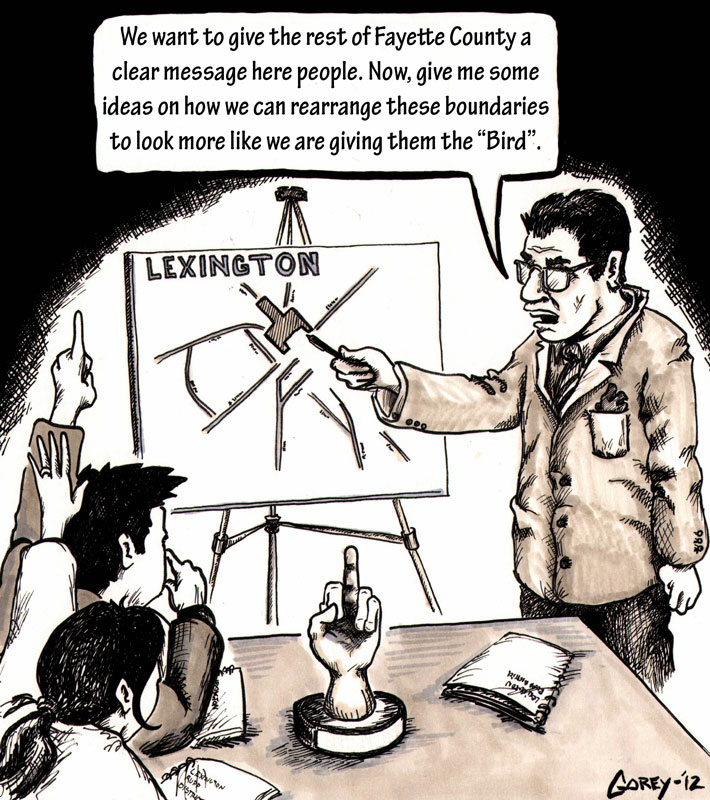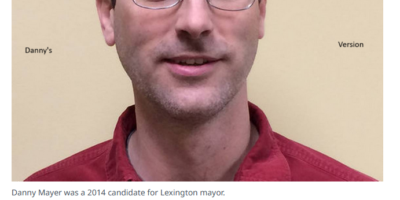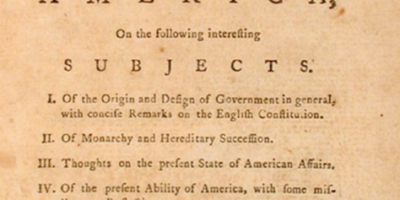Fayette Urban Countiers unite!
A Creatives for Common Sense position paper
“The city now known as Lexington, KY, is built of the dust of a dead metropolis.”
—George Washington Ranck, History of Lexington Kentucky: Its early annals and recent progress (1872)
The Lexington brand is dead, its meaning long since blown on Entertainment and Bourbon districts, Rupp Arenas and Horse Parks. Lexington is the home of land barons and great compromisers, slave markets and horse markets. Its public statues enshrine regressive losers who, during a centuries-old civil war, skulked hardscrabble Bluegrass farmers out of meanness, and the preservation of slavery. Its signature sport team’s most signature sports moment (UK v. Texas Western) stands 40 years later as a defining symbol of the racist, defeated, loser all-white aspirations held by many in the country who fought viciously against the Civil Rights movement.
In Lexington today, Middle-Eastern Sheikhs and poorly-dressed white Euro-trash trust fund adults make big equine deals so we can all blissfully watch tiny Latinos ride million dollar horses around a track; pasty Midwestern coal lords under-write the sinewy grandsires of black jockeys provided they can run up and down a basketball court to the cheers of 20,000 mostly white, mostly wealthy fans, in an arena named for no less a man than college basketball’s moral equivalent of Jefferson Davis (another “man of his times” who also, it turns out, has Lexington ties). Brand-wise, the city’s image relies heavily on attracting old crusty boring awkward white people, most with money, who get off garnishing themselves with just enough color for proper aesthetics.
Unfortunately, that shrinking demographic is highly-sought after and comes with expensive upkeep. Maintaining the Lexington image for them is costing us shit-tons of money. Lexington has chosen the worst time possible to pay for remaking itself as a city—at the height of a global urban development boom. Here as in other places, urban land and nearby “unique” pastoral farmscapes carry the most costs and require the most capital to secure and develop. Thirty years ago, when Lexington went suburban-gentry, urban branding offered big returns. Few did it, so the act stood out. Now, everyone does it. By buying in late at the height of the city bubble, branding Lexington as a world class city requires greater resources and offers lower (if any) rates of return.
Put plainly, not only is brand Lexington culturally outdated and currently uber-expensive, it’s also a bad business investment: it returns very little on the very large public investment needed to feed it.
Creatives for Common Sense believes that the time is now to divest from our city brand, that narrow, middle-finger-like sliver of over-valued land surrounding Main Street (and the high-priced farms dotting the spaces beyond) that leaders have branded “authentically us.” We must turn Lexington under, let it sit and rot itself back into the earth for some future use. Our lone remaining obligation should be simply on occasion to piss upon it, for the nutrients, and to reimagine ourselves as something better.
In its place, CfCS suggests the demographically, geographically, geologically, culturally, economically, botanically, poetically and hydrologically more diverse and inclusive “Fayette Urban County” (FUC) as our collective brand-identity.
The FUC brand has a number of things going for it. In terms of coverage, it is a brand that actually accounts for all of us. Aesthetically, the FUC horse head (the general shape of our county) is an infinitely preferable footprint than the Lexington “middle finger” our leaders have embraced. Regionally, identifying as a FUCer is more in line with the rest of the state, which tends to identify by county and not city.
And let’s not forget, in choosing FUC, Lexington’s historical brand transgressions can be wiped clean, the image equivalent of urban renewal. Where does that $5 million dollar asshole coach live who is leading the college basketball race to the bottom? Where is the flagship state school that most Kentuckians can no longer afford to attend? In what city is that great statesman whose compromise allowed slave trading to continue for another decade down the street from his estate? Where was that joke of a World Horse Olympics? What city’s airport allowed Bin Laden’s super-rich family to fly on 9/11 when the rest of the country’s airports were shut down? Brand-wise, these places and those assholes are all tethered to Lexington, KY, not Fayette Urban County.
Most importantly for Creatives, the county approach has the potential for off-the-charts growth in regional and national brand identity. While locales the world over compete on the expensive and crowded “best city” market, few places embrace their county heritage. Lexington, re-branded as Fayette Urban County, can be the standard-bearer for this new, as of yet untapped, market identity. Not only might this potentially save FUCers money when they pimp themselves to “the world,” but it might allow more of us—those without the means to pay into the turgid high-rent Lexington brand—more opportunities to benefit from our government’s marketing opportunities.
We say it proud. We are not Lexingtonians. We are FUCers. And we invite others who have any common sense about them to join us and be FUCers, too. Brand-up, Creatives.




Wes
Michael, parochial twits might refer to you as a West Coast FUCer, a Migrant FUCer, or Internally Displaced FUCer, or even a Fly-Over State FUCer. To me, you’re just a FUCer, plain and simple.
Michael Benton
When I lived in California I was told that I am a FUCer; it is good to know now exactly where I belong.
michael
As a transplant from California I’m wondering what it will take for native FUCers to accept me as a FUCer?
Danny Mayer
FUCers are less parochial than the hoity-toity Lexingtonian set, so feel free to identify as one of us even though you are not “from” here. Maybe, since you are from California, you could be a sun-FUCer.
Lexpat82
As far as famous 19th century radicals, rabble-rousers, feminists, social reformers, suffragists, abolitionists, and anarchists, Lexington had quite a few. Let’s talk about THOSE FUCers. Here’s one of my favorites: Sophonisba Preston Breckinridge.
Dan
You didn’t even mention the lameness of “Big Blue”, that UK blue colored horse that is supposed to be our mascot or something. And in the long list of embarrassing historical mentions you left out the bluegrass conspiracy. Everybody knows about Henry Clay and Jefferson Davis, but what mention do you see of Cassius Clay (the original)? Maybe there is a historical marker somewhere, but this dude ought to have a statue!
from his wikipedia entry:
Clay attended Transylvania University and then graduated from Yale College in 1832. While at Yale, he heard abolitionist William Lloyd Garrison speak, and Garrison’s lecture inspired Clay to join the antislavery movement. Garrison’s arguments were to him “as water is to a thirsty wayfarer.”[2] Clay was politically pragmatic, supporting gradual legal change rather than the immediacy of the Garrisonians.
Clay served three terms in the Kentucky House of Representatives,[3] but he lost support among Kentucky voters as his platform became more focused on ending slavery. His anti-slavery activism won him enemies. During a political debate in 1843, he survived an assassination attempt by a hired gun, named Sam Brown, and despite being shot in the chest, and being restrained by the attacker’s confederates, he defended himself, seriously wounding his attacker with his Bowie knife and throwing him over an embankment.[4]
In 1845, he began publishing an anti-slavery newspaper called the True American in Lexington, Kentucky. Within a month he received death threats, had to arm himself, and had to barricade the doors of his newspaper office for protection. Shortly after, a mob of about sixty men broke into his office and seized his printing equipment, which they shipped to Cincinnati, Ohio. Clay continued publication there.[1]
Aaron German
Can we get the “One Proud F.U.C.er” image from the print version on here? Can you make up shirts with the FUC horse on it? I’m serious.
Danny
Since the High Bridge area was once part of Fayette County, there’s always the historical nod in being a High FUCer. If you wanted to be a stickler about it, you could always identify as a Curd FUCer.
W. Houp
When you put it that way, seems I come from a long line of FUCers.
W. Houp
I don’t even live there, but FUC me! I’ll definitely FUC up on this challenge.